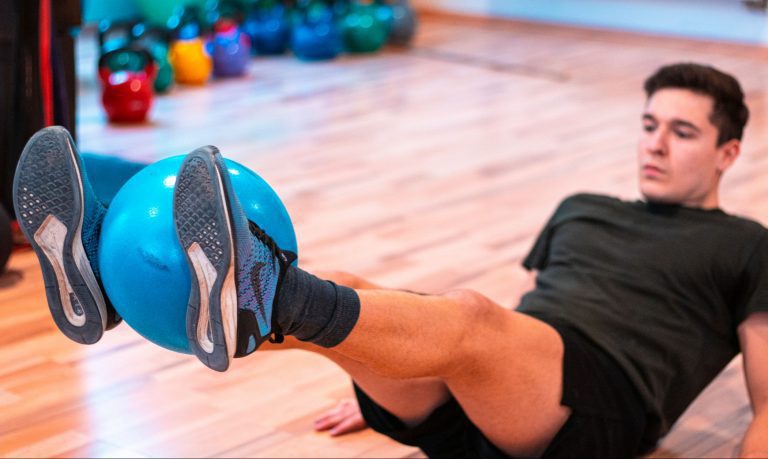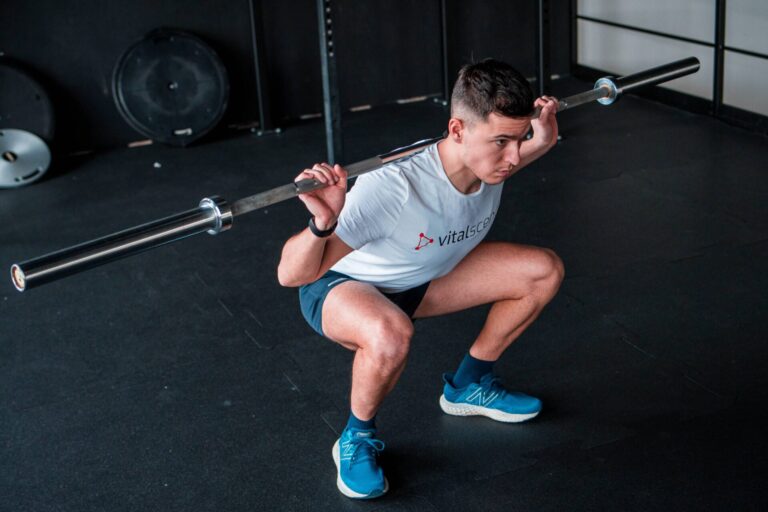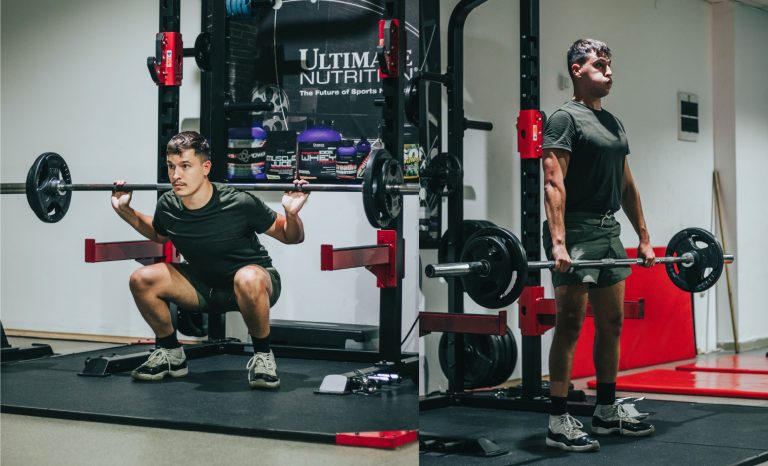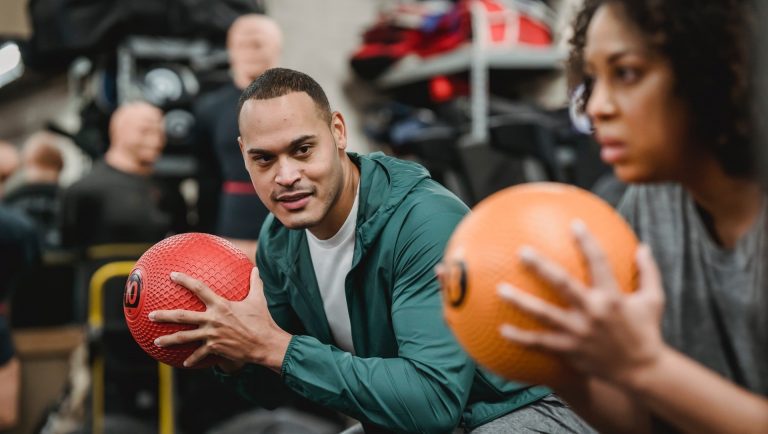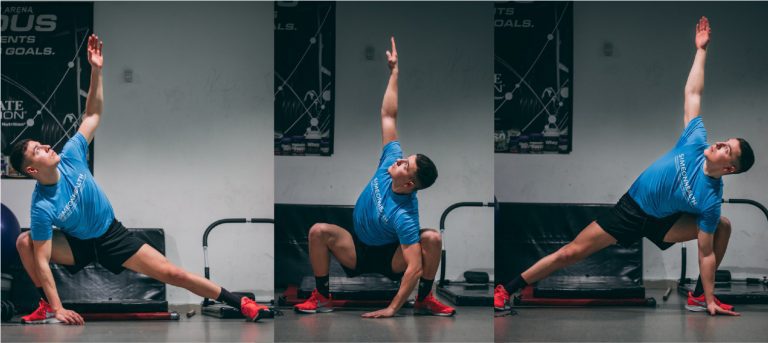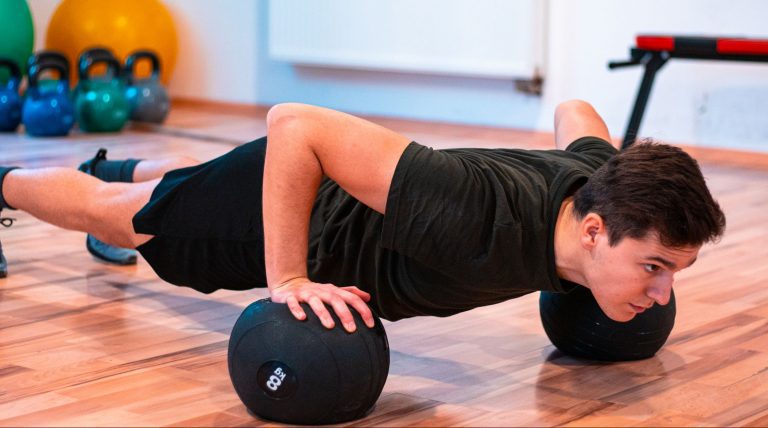The Only 5 Exercises You Need To Build Strength
For an amateur, reading blogs to optimize their fitness routine and combine the best exercises seems quite daunting and hard. After all, there’s so much data out there that it’s easy to end up in analysis paralysis. Just as with diets, writers try to dive deeper and complicate stuff to prove their knowledge.
However, for the average gym-goer who won’t completely change his life around his workouts, covering the basics is great for starters. We’ll discover the main 5 movement patterns and their corresponding exercises.
The goal is to train through the main, compound exercises which will give the highest return on investment. By progressively improving your squat, deadlift, press, pull, and core stability you get the most out of your workout. And for most, it’s about perfecting these 5 movements instead of increasing variability to a point where we’ve lost track of progress.
The 5 Movement Patterns
While biomechanics seem complex, we can broadly split movement patterns into 5
- Hip hinge → training the ability to extend from our hips; example – deadlifts
- Knee extension → training the ability to push through our legs by extending the knees; example – squats
- Push → vertical or horizontal push, training the ability to push things away from our body; example: bench press or overhead press
- Pull → vertical or horizontal pull, training the ability to pull things toward our body; example – pull-ups or seated horizontal row
- Anti-rotation → and its components like anti-flexion or anti-extension which train coactivation of numerous muscles to maintain core stability; example: plank or pall-off press
Understanding Movement
Lower Body
Upper Body
Core Stability
The hip hinge can be divided into hip-dominant [deadlift] or knee-dominant [squat]. In either case, it emphasizes lower body strength, as we primarily activate a large portion of our leg muscles to push through [drive] the ground to extend up. You can think of it as push or pull for the legs. Any hip dominant movements are considered pull for the legs, such as deadlifts, and mainly incorporate posterior chain muscles, or muscles on the rear portion. Knee-dominant movements like squats are considered push for the legs which mainly target the quadriceps muscle on the anterior side.
While the push and pull patterns primarily train the upper body, the more complex closed chain exercises like overhead presses and pull-ups require quite a lot of core activation to properly stabilize the body. Push exercises train the anterior chain, muscles such as the chest, shoulders, and triceps. Pull exercises train the posterior chain, and numerous muscles on the back, such as latissimus, rear deltoids, and scapular retractors.
Since the core connects the whole body, it’s an integral part of strength training. A weak core causes deficits and limits in all other exercises [squats, deadlifts], and increases the risk of injury. Training your core isn’t about doing your traditional six-pack abs workout, pushing through 100 crunches. No. The core is comprised of numerous muscles including frontal abdominals, back erectors, side obliques, and inner core stabilizers. Exercises that emphasize anti-rotation, anti-flexion, and anti-extension movements train the core. Also, the core should be trained [and tight] through all of the compound exercises listed above.
The Only 5 Exercises
As a kinesiologist, I tend to see the confusion in my client’s eyes. What seems perfectly simple and reasonable to me, seems quite complex to someone who’s not educated in the field. So first thing I’d do is explain the philosophy of training, along with some tips on how to adapt training intensity.
The biggest misconceptions lie around the type of exercises chosen. One must understand that doing a single-leg step-up, a lunge, or a squat isn’t that dissimilar. It’s the same movement pattern – knee extension; it’s the same muscle → quadriceps; it’s the same ability/function trained → push off the ground.
If you understand this, it’s much easier to train and create your workout routine. For example, if you’d like to train your posterior chain, your main focus should be → deadlifts and pulls. Once you have that covered, you can seek variations. Aside from deadlifts, we look for variations that attack the same muscles → single-leg deadlift or hip thrust. For pull, we can add single-arm rowing, barbell bent-over row, or pull-ups. It’s really that simple.
Disclaimer
The following exercises are for educational purposes only. Lifting with incorrect form or lifting too heavy can result in an injury. Make sure to consult a qualified kinesiologist, physiotherapist, or coach to correct your technique and adapt the intensity.
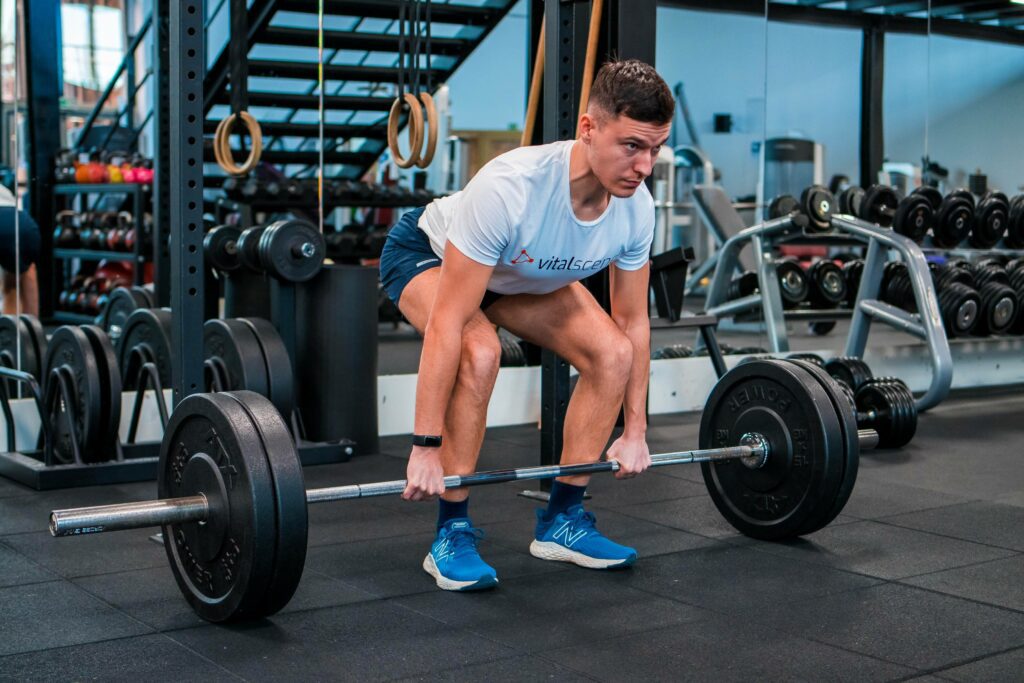
Deadlift
The deadlift builds a solid foundation of strength for the whole body. It’s the no.1 exercise when it comes to improving physical health, posture, movement biomechanics, and lower body strength. It trains our ability to push and extend our hips which fixes many muscle imbalances and weak spots. Consequentially, this improves posture, athletic performance, and overall strength.
To perform a deadlift, stand with your feet hip-width apart and your toes pointed slightly outward. Hinge forward at your hips and grab a weight (such as a barbell or dumbbell) with an overhand grip. Prior to lifting, position the weight [barbell] as close to your center of gravity [touching your shins]. Straighten your back and tighten your core to increase intraabdominal pressure [IAP]. Once ready, lift the weight off the ground and stand up straight, squeezing your glutes. Slowly lower the weight down in the same manner.
Function: deadlifts train the ability to extend through our hips. It primarily targets the posterior chain muscles like the glutes, hamstrings, calves, and back. In real life, this translates into improved performance during movements like standing up, picking objects from the ground, lifting your kids, snow removal, etc. Additionally, it improves everyday posture, relieves pressure on the spine [as glutes can take more of it], and helps sustain longer periods of standing.
Variations: single-leg deadlifts, hip thrust, hip bridges, knee flexion, romanian deadlifts, sumo deadlifts, 45˚ hip extension, and nordic curls.
Executing the deadlift with a high load and incorrect technique is very dangerous. Make sure you perfect the technique, learn to straighten your back, activate the glutes [and hamstrings], keep the barbell [or kettle] as close to your body as possible, and increase intraabdominal pressure. We highly recommend learning the proper technique with an experienced PT or a kinesiologist before increasing the load.
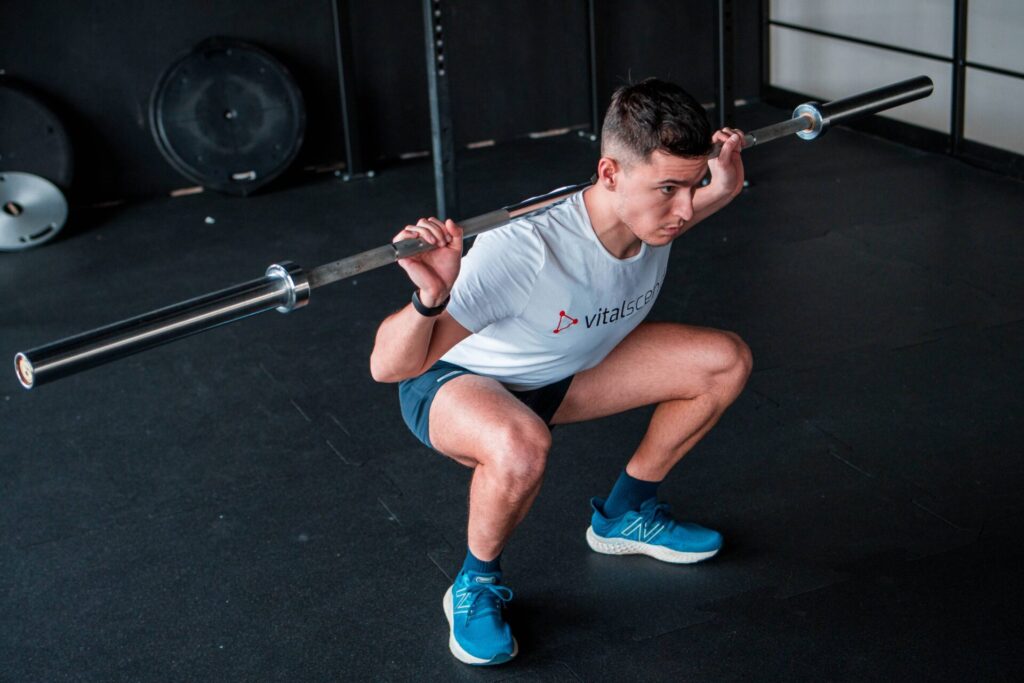
Squat
The squat is another foundational exercise that builds strength, mass, and stability. It’s the no.2 in terms of muscles activated, primarily targeting the quads, hamstrings, and calves. However, it also engages your core muscles and upper body as stabilizers. It’s essential for improving functionality, as it works on hip mobility – the most common deficit in many sitters. You won’t find better exercises than deadlifts and squats if your goal is to work the whole body, or increase strength.
To perform a squat, step under a barbell, position it on your upper back, and squeeze the shoulder blades together so your back muscles support the weight. Stand with your feet shoulder-width apart and your toes pointed slightly outward. Tighten your core, slowly descend controlling [resisting] the weight as you go. Lower below parallel, keep your spine straight, open your hips, and point your knees in the direction of your toes. You want to visualize how you’re pushing through the ground, driving the weight up as you stand and straighten up.
Function: the squat helps you perform any movement in which you push off from the ground. Whether you take the stairs, jump, hike, or get up from the coach → the squat can help you maintain these abilities for longer. Additionally, it improves hip mobility which counteracts numerous deficits, tip tension, LBP, and posture problems in sitters.
Variations: half-squats, lunges, bulgarian split squat, hack squat, step-up, box squat, sissy squat, pendulum squat, knee extension, and front squat.
Just as with deadlifts, it’s advisable to progress to heavier loads once you learn the optimal technique and gain sufficient mobility. Consult a PT or a kinesiologist to help you improve your weak spots, so you can squat safely.
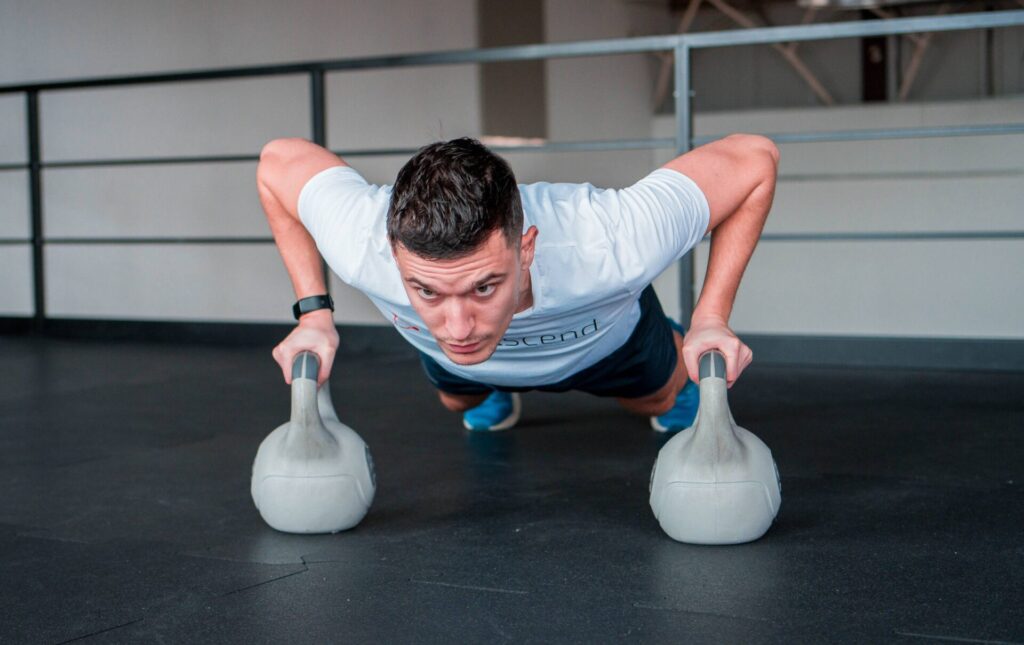
Push / Press
The pushing motion trains your ability to push objects away from your body. It allows you to lift off with your arms, just as done with a push-up. This helps you defend yourself, pass a ball, open a heavy door, or push off your desk to stand up. The vertical push helps you perform overhead movements like lifting and holding objects or throwing things overhead.
The push motion mainly incorporates upper body muscles, such as the chest, shoulders, and triceps muscles. We can split the movement into:
Horizontal push → the main exercise is Bench Press; varieties include incline or decline bench press, dumbbell press, push-ups, chest flys, or cable crossovers.
Vertical push → the main exercise is the overhead press, which indulges a large portion of the core. varieties include the dumbbell press, the single-leg press overhead, handstand push-up, the landmine press (diagonal), and ball throws overhead.
Additionally, vertical push can be also used to push yourself from the ground up, such as done during dips, triceps extension, or bench dips. This activates the triceps mostly and helps you push off the ground or your chair to stand up.
Besides being important for self-defense, manipulation of objects, opening doors, and lifting your kids → upper body exercises improve aesthetics. So if you’re a beach fan, try to avoid hitting the bench every day of the week, twice is enough.
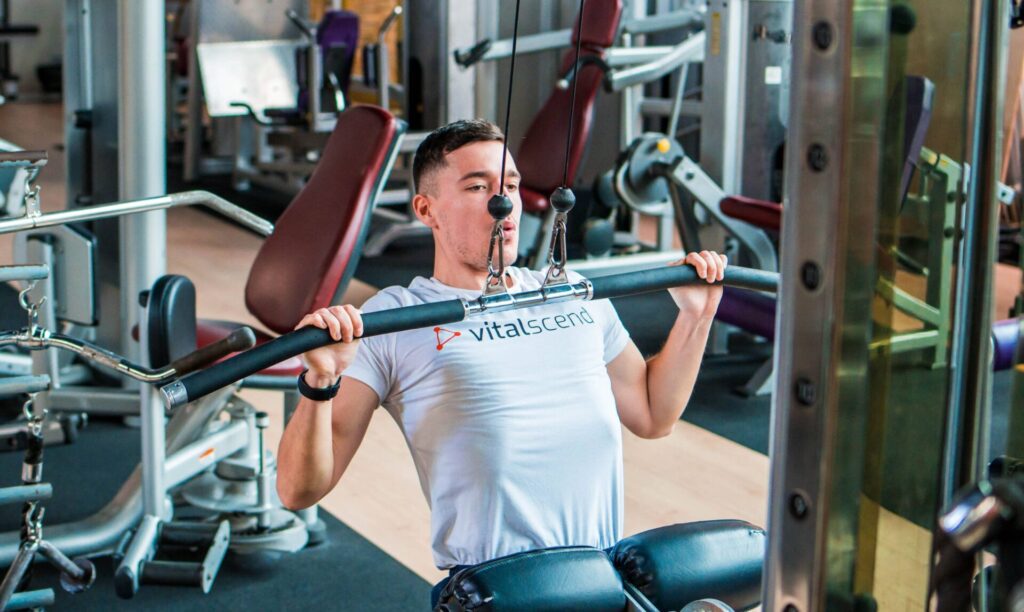
Pull / Row
Pulling motion helps you strengthen your back muscles, which are key for improving posture. Strong scapular retractors help you straighten your spine and back, which counteracts poor or slouched forward [kyphotic] posture, that stems from weak back muscles.
This improves confidence and reduces the common tension that accumulates in the back and neck area. Pulling motions help you with numerous movements like rowing [which we use a lot], opening a heavy door, pulling your partner toward you, opening the fridge, and getting that Starbucks coffee you crave.
Just as with push, the pull pattern can be done in
Horizontal pull → like the seated row which is the main exercise; variations include single-leg cable row, dumbbell row, bend-over row, and band pull-apart. These mainly target the lower trapezoid, rhomboid muscles, forearms, and biceps.
Vertical pull → the main exercise is pull-up, which also incorporates a large portion of the core. variations include all types of vertical lat pulldowns with a wide/narrow or over/underhand grip. Vertical pulling targets the largest back muscles – lats or latissimus dorsi, along with posterior deltoids and lower traps.
Pull motion, besides deadlifts is probably the main movement pattern that’ll correct most postural deficits. We live in a sedentary world, chained to a desk for about 8 hrs daily. Having a weak back won’t help. This is why exercises that emphasize rowing are important, and give a high return on investment.
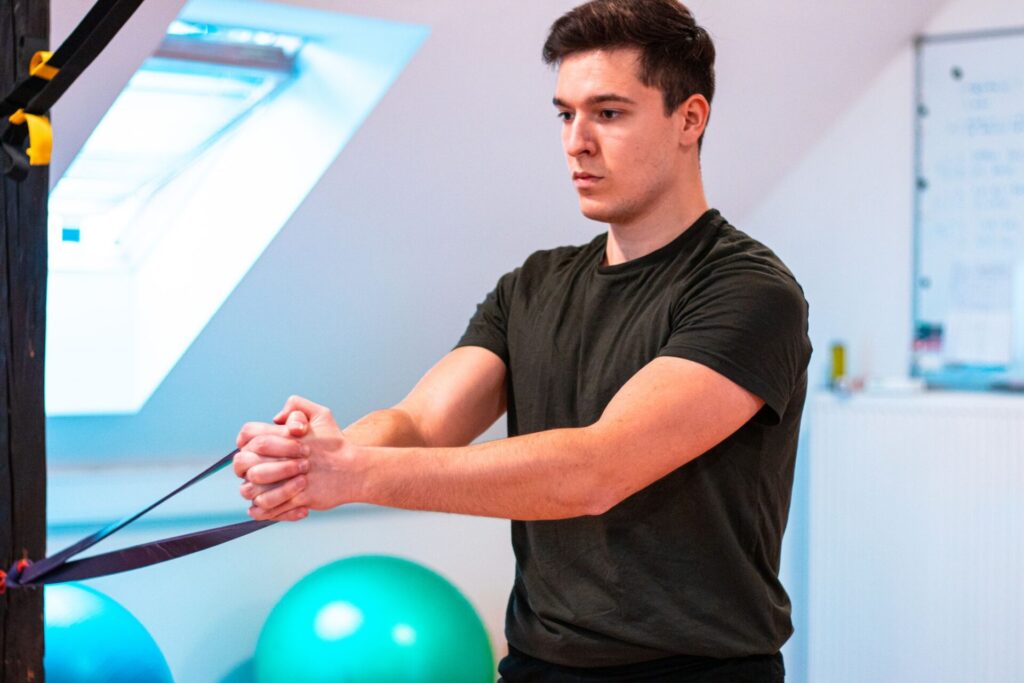
Anti-Rotation / Flexion / Extension
The core is the center of your body that works to keep everything in balance. It stabilizes movement to protect the spine. It counteracts and resists numerous forces, trying to keep your body in balance.
A functional core helps you move fluidly, but maintain stability. This depends on the coactivation of numerous muscles around the core, including front abdominals, side obliques, back erectors, and inner, diaphragmatic muscles.
One must learn to incorporate [and train] the core throughout every other movement, be it deadlifts, squats, or overhead presses. This is done by tightening your core to stabilize movement and increase intraabdominal pressure, especially during heavier lifts.
Core-specific training isn’t a must for aesthetics, but functionality. The core works mainly to resist rotation, flexion, and extension. In other words, any position, static or dynamic, that will force such movements, is a core exercise.
- Anti-rotation is an exercise that involves core activation to counteract rotation. Such are the regular anti-rotation, pall-off press, or plank rotations.
- Anti-flexion or anti-lateral flexion exercises include deadlifts, side planks, suitcase carry, farmer carries, and good mornings, in which the core resists flexion.
- Anti-extension exercises include wheel rollouts, front planks, bear plank body saw, swiss ball rollout, dead bugs, etc.
In terms of efficiency, the core doesn’t need a special 2-training core-specific session per week. It’s either way incorporated within every workout. The best bang-for-you-buck for training your core is incorporating just 1-2 extra exercises at the start [warm-up] or end of your training → like a dead bug, pall of pres, and some plank variations.
Benefits of Compound Exercises
Compound exercises are dynamic, multi-joint movements that engage and stimulate multiple muscle groups simultaneously. These types of exercises offer the greatest return on investment due to their high metabolic demand, nervous system activation, and muscle mass trained.
For starters, compound exercises activate a large portion of our muscle mass. Let’s compare doing a heavy squat to calf raises. When you squat you activate more than 60-70% of your body – including large muscles like the glutes, quads, hamstrings, and core. The calf raise is only activating the calves.
That translates to other compound exercises. These are harder to do but are fundamental, and more beneficial [effective] for building muscle mass and increasing strength. Building muscle requires sufficient training volume, and compound exercises train numerous muscles at once. To increase strength, one must activate their CNS to the max. This is most effectively done with close chain exercises like bench press, or deadlift.
Finally, compound exercises offer a superior metabolic effect, meaning they can help you burn more calories and fat in a shorter amount of time. These exercises require more energy to perform and have a greater post-exercise metabolism boost compared to isolation exercises.
Conclusion
Compound exercises give the best return on investment for building muscle, increasing strength, and improving body composition. They’re a fundamental piece to becoming a more functional human.
Mass and Strength Correlation
Mass moves mass. A common phrase that points to the relationship between muscle and strength. In other words, heavier, more muscular bodies can lift greater loads. This is true.
While there is a great difference between training for mass and training for strength, generally, heavier people can lift more weight. That’s because the structure of their bodies, including bones and muscles are more rigid, as they have to carry their [heavier] bodies through space.
Training for mass emphasizes volume. It depends on anatomical adaptations, triggering the growth and regeneration of tissues. Training for strength emphasizes load. Lifting greater loads trains nervous system activation, as we become more capable of recruiting larger motor units. It depends on neural [neuromuscular] adaptations.
Compound exercises are great for both, but a must for strength. Especially for a beginner lifter, up until their 3rd year of consistent weight training – most would get the biggest return on investment with compound exercises. This is against the literature that states isolation (instead of compound) work is better at stimulating muscle growth.
While that’s true to an extent, it’s mostly true for bodybuilders who have hours to spend in the gym and need to squeeze that last 2% of muscle that’s humanly possible. The average Joe would visit the gym 3 times a week. Not doing compound work like squats, deadlifts or bench press is in many cases, not the best strategy.
How to create your workout
Now that you understand movement patterns and exercise categorization, you can do:
| Standard Split Training | PAC Split | Hybrid Split (Diagonal) |
| Push (Chest, Triceps, Shoulder) | Posterior Chain Deadlifts and Rowing | Back and Front Portion of the Legs Squats, Lunges, and Rowing Exercises |
| Pull (Posterior, Back Muscles) | Anterior Chain Squats and Pushing | Chest and Rear Portion of the Legs Deadlifts, Hip Thrusts, and Push Exercises |
| Legs (Quads, Glutes, Hamstrings, Calves) |
Generally, these are some of the best, simple training structures [splits] for training. Of course, you can use a variation of exercises you know to fit within the same movement pattern. For example, let’s say you do the PAC Split, and you visit the gym 2 weekly. What will be your first training comprised of? It says deadlifts and rowing → in terms of movement patterns that’s hip hinge and pull.
You can use any of the variations mentioned above. For example, you prime for deadlifts, being your main focus. Additionally, you do hip bridges and single-leg deadlifts. For the pulling part, you can do pull-ups, face pulls, and horizontal wide-grip seated rows. It’s that simple.
The only extra thing you need to take care of is training metrics. Adapt your training based on your goals. Are you trying to grow muscle mass or increase strength?
Conclusion
- The 5 main movement patterns we train for are hip hinge [deadlift], knee extension [squat], vertical or horizontal push [bench press], vertical or horizontal pull [pull-ups], and anti-rotation [anti-flexion or anti-extension].
- The top 5 compound exercises that cover each movement pattern include – deadlift, squat, bench press or overhead press, pull-up or seated row, and farmer walks or anti-rotation.
- Compound exercises give the best return on investment, as they incorporate large muscle mass, increase strength, and enhance mobility. Doing functional, multi-joint exercise improves numerous aspects of physical health and strength, all at once.


